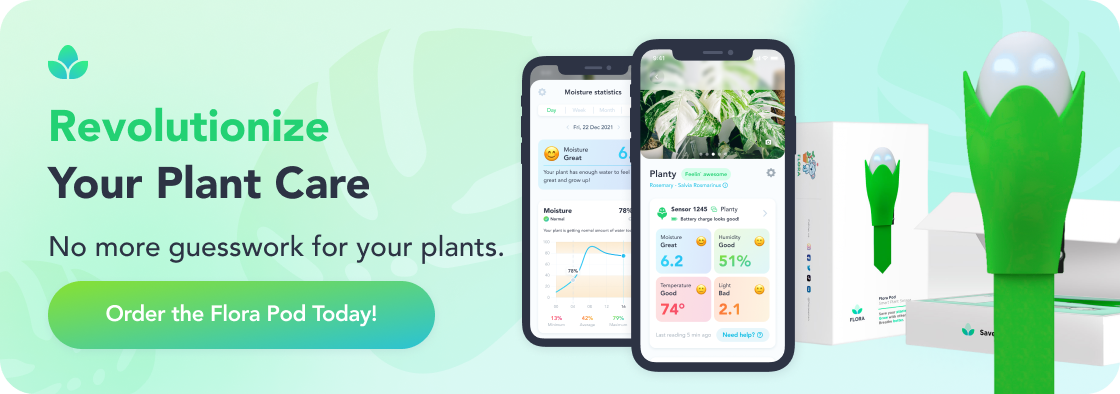Christmas Tree Care Guide: How to Keep it Fresh
A Christmas tree is more than just a seasonal decoration—it’s a beloved symbol of joy, warmth, and togetherness during the holidays. Choosing the right tree and providing it with proper care ensures it remains vibrant and beautiful throughout the festive season. Whether you’re working with a cut tree or a sustainable potted option, understanding how to maintain its freshness, troubleshoot common challenges, and manage post-holiday care is key to creating a memorable holiday experience.
Choosing the Right Christmas Tree
A Christmas tree stands as the heart of holiday festivities, transforming your home into a haven of warmth, joy, and seasonal cheer. Beyond its decorative allure, it embodies tradition, bringing families and friends together to celebrate the spirit of the season. Selecting the perfect tree goes beyond aesthetics; it involves thoughtful consideration of your home’s size, style, and the practical needs of maintaining a tree's freshness throughout the holidays. Whether you’re drawn to the scent of a real tree or the lasting charm of a potted variety, your choice sets the tone for a festive atmosphere that enhances every cherished moment.
Types of Christmas Trees
When choosing a tree, consider popular types such as Fraser fir, Douglas fir, and Balsam fir. These varieties are known for their lush foliage, pleasant aroma, and strong branches that can hold ornaments. Fraser firs are prized for their needle retention and symmetry, while Douglas firs boast soft needles and a classic scent. Balsam firs offer an intense fragrance and dark green needles that evoke timeless holiday vibes.
Tree Size and Space Considerations
The size of your Christmas tree is equally important. Measure the available space in your home, accounting for ceiling height and room dimensions. Trees that are too large can overwhelm your space, while smaller ones may not make the desired impact. Choose a tree with proportions that harmonize with your room's layout, leaving ample space for decorations and gifts underneath.
Preparing Your Christmas Tree
Properly preparing your Christmas tree is essential to preserving its beauty and vitality throughout the festive season. A well-prepared tree not only enhances your holiday décor but also minimizes the risk of needle drop, dryness, and other common issues. Taking the time to ready your tree ensures it can absorb the water and nutrients it needs to remain fresh and vibrant. From trimming the trunk for better hydration to selecting the ideal stand and placement, each step plays a critical role in maintaining the tree’s health. By following these preparation techniques, you set the stage for a stunning centerpiece that will last through all your holiday celebrations.
Trimming the Trunk
After bringing your tree home, cut about an inch off the bottom of the trunk. This fresh cut opens up the tree's pores, allowing it to absorb water more efficiently. If the tree’s base dries out, it will struggle to take in water, leading to premature needle drop. Make the cut just before placing the tree in its stand for best results.
Choosing the Right Tree Stand
Your tree stand plays a pivotal role in maintaining the tree’s health. Opt for a sturdy stand that can hold enough water to keep the tree hydrated—typically about a quart of water per inch of the trunk’s diameter. Avoid stands that require nails or screws through the trunk, as these can impede water absorption and damage the tree.
Positioning Your Tree
The placement of your tree matters. Keep it away from heat sources such as radiators, fireplaces, or direct sunlight, as these can dry out the needles. Choose a cool, draft-free location where the tree can shine without the risk of overheating or drying out prematurely.
Maintaining Your Christmas Tree's Freshness
Keeping your Christmas tree fresh and vibrant throughout the holiday season demands a combination of diligent care and thoughtful practices. A fresh tree not only enhances the festive ambiance but also reduces the likelihood of dry needles or drooping branches that can detract from its beauty. Regular hydration is at the heart of this process, as it ensures the tree remains lush and resilient. Pairing proper watering with strategic maintenance—such as monitoring its position away from heat sources and maintaining a stable room temperature—can significantly extend the tree's lifespan. With consistent attention, your tree can continue to serve as a stunning focal point, adding warmth and charm to your home during this joyous time of year.
Hydrating Your Tree
Water is the lifeblood of your Christmas tree. Refill the stand with fresh water daily to prevent the base from drying out. A general rule of thumb is that a tree can absorb a quart of water per inch of trunk diameter each day. Avoid additives like sugar or commercial tree preservatives, as plain water is usually most effective.
Monitoring Needle Retention
Healthy needles are a sign of a fresh and well-maintained tree. Gently run your fingers along the branches; needles that fall off easily indicate the tree is drying out. Maintaining adequate hydration and avoiding overly warm environments can minimize needle drop and keep your tree full and vibrant.
Protecting Against Dryness
Dry indoor air can accelerate the drying process. To combat this, consider using a humidifier in the room where the tree is located. This adds moisture to the air, slowing down water loss from the tree. Additionally, misting the tree lightly with water (avoiding electrical decorations) can help keep the needles hydrated.
Troubleshooting Common Christmas Tree Issues
Despite your best efforts, your Christmas tree may face occasional challenges that threaten its freshness and visual appeal. Common issues such as needle drop, dryness, or pest infestations can arise, often stemming from environmental factors or overlooked care details. Recognizing these problems early and taking swift action is crucial to preserving the tree’s charm and ensuring it continues to shine as the centerpiece of your holiday celebrations. Whether it’s adjusting watering practices, repositioning the tree away from heat sources, or addressing pests with safe and effective methods, proactive care allows your tree to remain lush, vibrant, and a joyful symbol of the season.
Drying Needles and Browning
One of the most common concerns is needle drying or browning, which detracts from the tree’s lush appearance. This often results from inadequate watering or placement near heat sources. Check the water level in the stand daily and ensure the trunk is submerged. If browning persists, consider moving the tree to a cooler location and inspecting for blocked pores in the trunk.
Uneven Needle Shedding
While some needle loss is natural, excessive shedding may indicate stress. This can happen if the tree was exposed to extreme temperatures during transport or storage. To mitigate this, gently shake the tree before setting it up to remove loose needles and avoid moving it frequently once positioned.
Pests or Fungal Issues
Real trees can sometimes harbor unwelcome guests like spiders, mites, or aphids. Inspect the tree thoroughly before bringing it indoors, and shake it outdoors to dislodge any insects. If pests appear, remove them manually or use a plant-safe insecticide. Fungus or mold on the trunk can be treated with a diluted vinegar solution applied carefully with a cloth.
Caring for Potted Christmas Trees
Potted Christmas trees offer a more eco-friendly and sustainable choice, allowing you to enjoy them indoors during the holidays and plant them outdoors afterward. Here's how to care for them:
Acclimate the Tree to Indoor Conditions: Gradually transition your tree by first placing it in a sheltered outdoor area, like a porch, for a few days before bringing it inside. This minimizes shock from sudden changes in temperature and humidity.
Water and Soil Management: Keep the soil consistently moist but not waterlogged. Check daily, and water when the top inch of soil feels dry. Use a saucer or tray under the pot to catch excess water and protect surfaces from moisture damage.
Choose the Right Spot: Position the tree in a cool area with indirect sunlight. Avoid placing it near heaters, fireplaces, or areas with dry air, as these conditions can stress the tree.
Limit Indoor Time: Keep the tree indoors for no longer than 7-10 days to avoid long-term damage. Extended indoor exposure can weaken the tree, reducing its chances of thriving when replanted.
Prepare for Replanting: Once the holidays are over, transition the tree back outside gradually, as you did when moving it indoors. After it has readjusted to outdoor conditions, plant it in an appropriate location with enough space for growth.
Post-Holiday Care for Your Christmas Tree
Caring for your Christmas tree doesn’t end when the holidays are over. Whether you have a cut tree or a potted one, proper post-holiday care ensures minimal environmental impact and, for potted trees, a healthy future outdoors.
Disposing of Cut Trees
When the season ends, responsibly disposing of your cut tree is essential. Many communities offer recycling programs that turn trees into mulch or compost. Check your local guidelines for drop-off locations or curbside pickup schedules. Avoid burning the tree in a fireplace, as dry needles can create a fire hazard and release excess creosote into your chimney.
Preparing Potted Trees for Replanting
For potted trees, transitioning them back to the outdoors requires care:
Gradually acclimate the tree to outdoor conditions by placing it in a sheltered location for a week or two before planting.
Select a site with enough space and appropriate soil conditions for the tree species. Research your tree’s growth requirements to ensure long-term success.
Dig a hole twice as wide as the root ball and deep enough to keep the tree at its current soil level. Water the tree thoroughly after planting and mulch the base to retain moisture and regulate temperature.
Repurposing Tree Parts
If you’d like to reuse your cut tree creatively, consider repurposing the branches for garden mulch or as habitat shelters for birds and wildlife or for Christmas planters. Trunk sections can serve as rustic garden edging or firewood after proper drying.
FAQs About Christmas Tree Care Guide
How do you care for a real Christmas tree to prevent needle drop?
To prevent needle drop, place your tree away from heat sources and ensure the trunk is always submerged in water. A fresh cut at the base and consistent hydration are essential for maintaining needle retention.
What is the best way to keep a potted Christmas tree healthy indoors?
A potted tree thrives when positioned in a cool room with indirect sunlight. Keep the soil moist but not waterlogged, and limit indoor time to 7-10 days to avoid stress.
Can a Christmas tree last an entire holiday season with proper care?
Yes, with consistent watering, correct placement, and attention to environmental factors like humidity and temperature, a Christmas tree can remain fresh and vibrant for several weeks.
What should I do with a cut Christmas tree after the holidays?
Recycle your cut tree through local programs, repurpose branches as mulch or garden habitat, or dispose of it in a sustainable manner as guided by your community.
How do I prepare a potted Christmas tree for replanting after the holidays?
Gradually acclimate the tree to outdoor conditions by placing it in a sheltered area for a week or two. Select a suitable planting site with appropriate soil and ensure the roots are well-watered before and after planting.
Caring for your Christmas tree thoughtfully enhances its beauty and longevity, making it the centerpiece of your holiday celebrations. By following the best practices for hydration, placement, and maintenance, you can ensure your tree remains fresh and lush throughout the season. Whether disposing of a cut tree responsibly or transitioning a potted tree to outdoor life, these steps contribute to a meaningful, eco-conscious holiday tradition that leaves a lasting impact.
Fern's Leafy Learnings
Selecting the right type and size of Christmas tree ensures it complements your home and lasts throughout the season.
Proper hydration and consistent maintenance are essential for keeping a Christmas tree fresh and lush.
Troubleshooting issues like drying needles, pests, and uneven shedding helps preserve your tree's beauty.
Potted Christmas trees offer a sustainable option, allowing you to plant them outdoors after the holidays.
Responsible post-holiday practices, like recycling cut trees or replanting potted ones, reduce environmental impact and extend the joy of the season.
Deepen Your Roots with Flora
At Flora, we not only bring you a vibrant selection of locally sourced, rare, and delightful plants, but we also serve as your continuous guide in your plant parenting voyage, ensuring every leaf in your sanctuary thrives. With our Flora Pod™ technology and a nurturing community of over 250,000 plant lovers, we cultivate a space where every plant parent - novice or expert - can blossom.
We propagate with a commitment to sustainability, connection, and ceaseless growth, fostering a community where each member, and their plants, are cherished and nurtured.
Crave a lush, thriving green space? Adopt a plant from Flora today!
Flora Pod™ is featured on Shark Tank!

Shop Plants
Top 10 Most Popular Roses
Mar 22, 2022
How to Care for China Roses
Mar 11, 2022
How to Care for Chinese Money Plants
May 15, 2020
How to Grow and Care for A Bird of Paradise
Apr 26, 2020
Top 10 Plants To Grow In A Terrarium
May 31, 2022
How to Grow and Care for Lucky Bamboo
Mar 29, 2022
How to Grow and Care for Corn Plants
Mar 29, 2022
How to Care for Madagascar Dragon Trees
Mar 21, 2022



